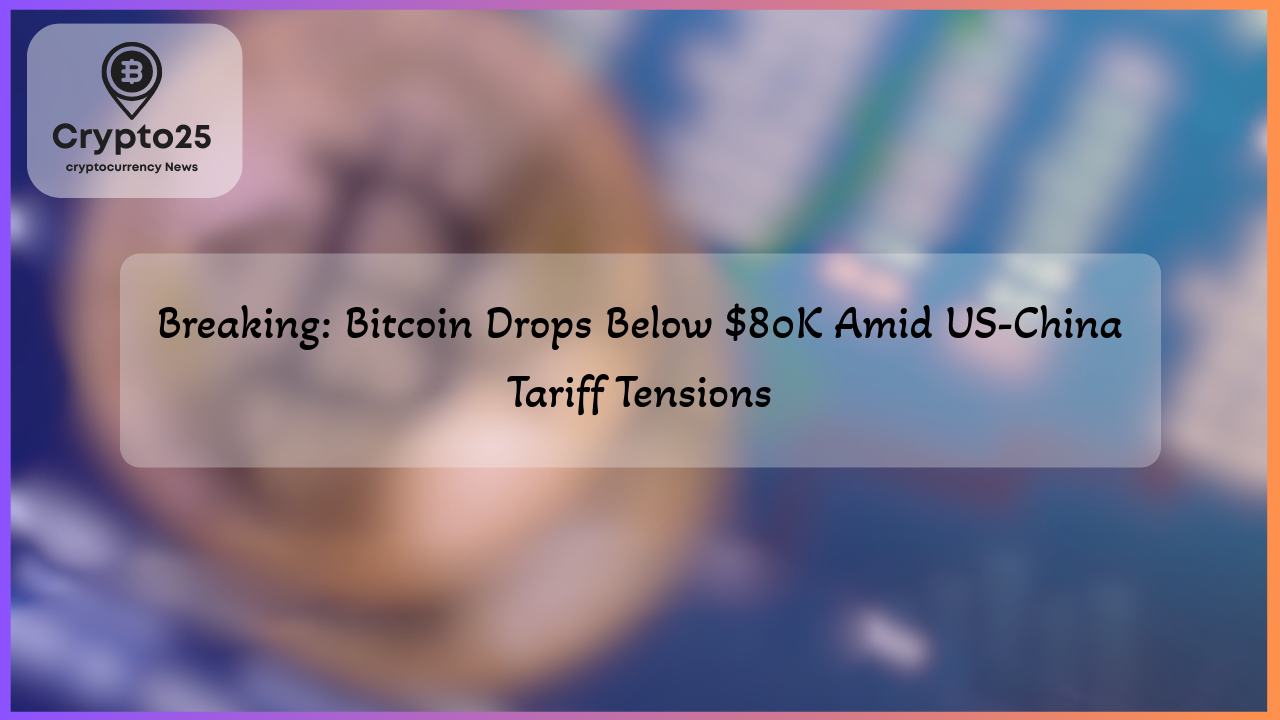
The world of cryptocurrency continues to witness dramatic twists and turns, with influential factors like geopolitical tensions and macroeconomic shifts shaping market dynamics. From Bitcoin price fluctuations to the rippling effects of the US-China trade war, digital asset enthusiasts and investors alike face an unpredictable landscape. Let’s examine the latest developments and what they mean for the crypto market.
### The US-China Trade War and Its Impact on Cryptocurrency Markets
The escalating US-China trade war has created turbulence across global markets, including the cryptocurrency sector. Following announcements by former President Trump to impose tariffs as high as 145% on Chinese imports, the financial world is grappling with volatility on an unprecedented scale. Markets initially rebounded after a temporary pause in the levies, but growing tensions pushed investor sentiment into a downward spiral.
This economic standoff has severely affected cryptocurrencies like Bitcoin and Ethereum. Fear stemming from market instability has driven some investors toward gold as a safe-haven asset, weakening demand for speculative risks such as cryptocurrencies. Peter Cardillo, chief market economist at Spartan Capital Securities, commented on the “psychological damage” inflicted on both financial markets and corporate ventures due to trade wars. With no resolution in sight, the crypto sector could remain under pressure as investors await greater macroeconomic clarity.
| Title | Details |
|---|---|
| Market Cap | $1.2 Trillion |
| Bitcoin Price | $80,476 |
This ongoing uncertainty highlights the interconnectedness between cryptocurrency and global economics. Although blockchain assets remain an attractive diversification tool, traders must navigate external economic disruptions like currency wars and tariffs to make informed decisions.
### Bitcoin Price Forecast: Will It Hit $250,000 or Drop Further?
Bitcoin’s erratic performance has left traders speculating whether the flagship cryptocurrency will rebound or succumb to deeper corrections. Analysts suggest that Bitcoin must climb beyond $93,000 to restore bullish momentum. However, failure to hold critical support zones between $65,000 and $71,000 could spell trouble for the digital asset in the near term.
On a more optimistic note, Glassnode’s on-chain data suggests a possible near-term reversal. Indicators show that fewer traders are selling Bitcoin at a loss during each market dip, a phenomenon that could signal seller exhaustion. Furthermore, Charles Hoskinson, the founder of Cardano, remains confident in Bitcoin’s upward trajectory. He boldly predicts that Bitcoin could reach $250,000 by the end of the year, driven by increasing institutional adoption and renewed market enthusiasm.
Despite these optimistic forecasts, risks remain. Pivotal resistance levels, compounded by external pressures like the trade war, could impede Bitcoin’s growth. As a decentralized asset, Bitcoin’s price trajectory relies heavily on the combined sentiment of individual and institutional investors. Thus, staying vigilant about macroeconomic headwinds is crucial for market participants.
### How Should Investors Respond to Current Market Trends?
For crypto investors, the current environment demands strategic caution. With external factors like global trade disputes and the Federal Reserve’s monetary policies influencing markets, diversifying investments offers an effective way to mitigate risks. Traditional safe-haven assets like gold are witnessing strong rallies, reinforcing the appeal of hedging against uncertain economic circumstances.
Meanwhile, Ethereum and other altcoins could provide alternative opportunities for growth. As institutional interest continues to grow, crypto markets may also benefit from increased regulation and the introduction of exchange-traded funds (ETFs). In the long term, projects built on robust blockchain foundations—such as Ethereum’s staking mechanisms—might deliver substantial returns once market volatility subsides.
Looking ahead, traders can focus on on-chain metrics and technical indicators to identify key support and resistance levels across the crypto space. By maintaining a balanced investment strategy and closely monitoring macroeconomic trends, crypto investors can position themselves for the potential rewards of Bitcoin’s speculative highs while minimizing downside risks.
In summary, the crypto landscape is far from predictable, but opportunities remain for those who adapt strategically. While the US-China trade war and other external pressures weigh heavily on markets, Bitcoin and altcoins still have the potential for significant gains. Staying informed and flexible will be essential to thriving in this ever-evolving digital asset ecosystem.
